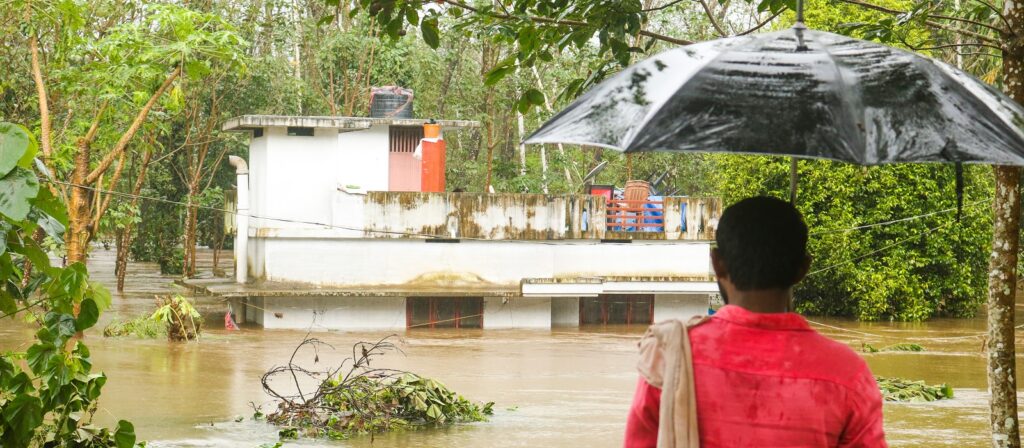“The year 2022 witnessed the category 4 storm Hurricane Ian devastate southwest Florida in the United States, while unprecedented flooding displaced 33 million Pakistanis and extreme heat melted train tracks and airport runways in the United Kingdom. Such extreme weather events challenge societal tendencies to deal with the aftermath of storms, floods, heatwaves and wildfires as business-as-usual and that we can recover from them by repeatedly rebuilding and regrouping. Instead, they highlight the need for building more resilience to the physical threats posed by climate change before they strike.” writes Julian Enoizi, Global Head of Public Sector Risk Solutions, Guy Carpenter and Marsh McLennan.
We are pleased to share this guest blog from Julian, which is reproduced here for the benefit of ICMIF members with permission of Guy Carpenter and Marsh McLennan. The blog was originally published for the World Economic Forum Meeting in January 2023.
The past year alone has reinforced the gravity of the climate emergency. The year 2022 witnessed the category 4 storm Hurricane Ian devastate southwest Florida in the United States, while unprecedented flooding displaced 33 million Pakistanis and extreme heat melted train tracks and airport runways in the United Kingdom.
Such extreme weather events challenge societal tendencies to deal with the aftermath of storms, floods, heatwaves and wildfires as business-as-usual and that we can recover from them by repeatedly rebuilding and regrouping. Instead, they highlight the need for building more resilience to the physical threats posed by climate change before they strike.
However, the typical post-disaster recovery mindset means insufficient investment in risk adaptation and prevention. Despite what we know about how every dollar spent on pre-disaster risk reduction saves between USD 6 and USD 13 in damages, 88% of today’s disaster management funds from humanitarian, development and government sources are allocated to post-event response.
And the status quo traps communities in a cycle of recovery instead of investing in preparing for the next disaster to prevent similar hardship.
There is ample opportunity for creative climate adaptation solutions to mitigate the worst consequences of climate change and rebalance efforts towards proactive adaptation. That is why one of the 2022 UN Climate Conference’s (COP 27) main goals this year was to scale-up adaption efforts through the UN’s Race to Resilience campaign.
Still, a whole-of-society approach is needed to move towards true resilience.
Insurance sector’s role in resilience
As society’s risk manager, the global insurance industry is critical in ensuring resilience to a hotter, more volatile planet.
As a start, individual actions reducing individual risks are crucial. But by their very nature, climate-related risks are systemic – think rising sea levels threatening entire communities or extreme heat waves making a city uninhabitable – and therefore, demand systemic or community-wide solutions.
Thus, efforts at COP27 sought to broaden the insurance sectors’ role in the climate fight as Marsh McLennan joined with the Atlantic Council’s Arsht-Rockefeller Foundation Resilience Centre, the UN’s Race to Resilience team and the UN High-Level Climate Champions. Together, they will mobilise an insurance sector outreach campaign to galvanise support for the industry’s deepened participation in advancing climate risk reduction and adaptation initiatives at the community level.
Kathy Baughman McLeod, Senior Vice President and Director of the Resilience Centre, has emphasised the scale of human pain and economic loss that this approach could avoid. We aim to illuminate the cutting-edge strategies for community-level risk reduction and to foster a dialogue on how insurers can help rapidly scale those efforts.
Insurers have a proud legacy of protecting society from new system-level risks. Following the 11 September attacks on the Twin Towers in 2001, the industry became a key government partner supporting the Terrorism Risk Insurance Programme, a federal reinsurance backstop for terrorism losses. By many measures, the programme has been a model public-private partnership. The backstop remains a critical component of a stable terror insurance market.
It is time to do the same for climate risks.
Community climate action
What is encouraging is that many insurers are already developing new approaches.
The cross-sector Extreme Heat Resilience Alliance, hosted by the Adrienne Arsht-Rockefeller Foundation Resilience Centre, is sponsoring a series of city-specific heat-reduction interventions leveraging blended capital structures to ensure timely access to critical funding. That includes parametric insurance, where a set amount is paid based on the magnitude of the event
Likewise, the Insurance Development Forum – a classic public-private partnership of insurers, multilateral finance institutions, UN bodies and development agencies – launched the Global Risk Modelling Alliance bringing modern risk analytics tools to the most climate-vulnerable nations on earth.
Guy Carpenter and Munich Re – leaders in the reinsurance industry – are piloting “risk transfer” models that harness the administrative and diversification benefits of group reinsurance programmes to expand flood and wildfire coverages, lower costs and finance risk mitigation projects. And a host of other reinsurers, NGOs and development agencies are aligning forces to position reinsurance as the key to de-risking, accelerating or otherwise advancing local risk reduction projects.
Other community-level changes can be integral to climate adaptation too. Through building codes, zoning laws and other ordinances, state and local governments can influence where and how homeowners and businesses build to create climate-smart and resilient infrastructure, thereby saving citizens millions. According to a recent FEMA study, hazard-resistant building codes could help prevent at least USD 3.2 billion a year in weather-related losses by 2040. And there is ample evidence that this approach works. For example, Babcock Ranch, a community built to withstand more frequent and intense storms just 15 miles from Fort Myers (USA), sustained no significant damage after Hurricane Ian.
Recognising a new reality
Last year, the UN announced that the number of natural disasters had increased five-fold over 50 years due to climate change and the consequent rise in extreme weather events.
In the United States alone, the cost of weather and climate disasters nearly doubled between 2010 and 2020, according to the National Centres for Environmental Information.
Unfortunately, the only steady trend line is the increased frequency of climate disaster events and physical risk damages attributable to them.
That is why the UN Race to Resilience seeks to mobilise public and private sector leaders to act now and why we are honoured to work with them and insurance sector leaders to forge a new approach.
Natural Disasters and extreme weather events are one of the top ten risks facing the world. Read the Global Risks Report 2023 to learn about other global risks.
Learn more about ICMIF Supporting Member Guy Carpenter here.
During the 2022 ICMIF Meeting of Reinsurance Officials (MORO), Julian Enoizi presented in and moderated a session on public-private partnerships for managing systemic risk. Julian’s presentation looked at how public-private partnerships, especially those based on the mutualisation of risk, have the potential to enable the insurance industry to manage various systemic risks and capture new opportunities. ICMIF members are able to access a recording of Julian’s presentation via the ICMIF Knowledge Hub or by contacting Mike Ashurst for more information and the necessary links. For information and to register for the 2023 Meeting of Reinsurance Officials please click here.






